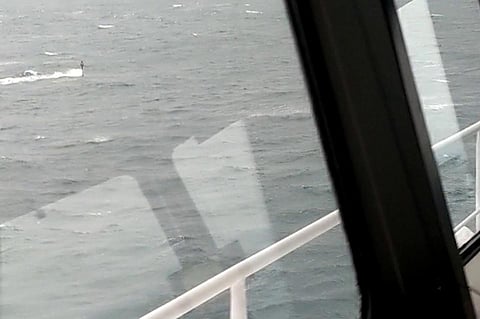

The UK's Marine Accident Investigation Branch (MAIB) has released its investigation report into a marine accident in 2018 wherein a Royal Navy submarine and a commercial passenger vessel nearly collided in the North Channel of the Irish Sea between Belfast and Cairnryan in Scotland.
At 12:56 local time on November 6, 2018, an officer of the watch on the Stena Line Ro-Pax ferry Stena Superfast VII took urgent action to avoid a submerged submarine after its periscope had been spotted close ahead of the ferry (pictured).
Post-event analysis by both the MAIB and the Royal Navy showed that, prior to the ferry's course alteration, there had been a serious risk of collision.
The near miss happened because the submarine's control room team had underestimated the ferry's speed and overestimated its range, resulting in an unsafe situation developing.
However, the submarine's control room electronic tactical display presented a picture of a safer situation than reality; this meant that safety-critical decisions made on board the submarine may have appeared rational at the time.
The MAIB report did not disclose the name of the submarine but confirmed that it is nuclear-powered and had been conducting an at-sea training exercise out of HM Naval Base Clyde in Faslane, Scotland, at the time of the incident.
The MAIB report added that the key similarity between this incident and two previous collisions involving Royal Navy submarines was the absence of a sufficiently accurate picture of surface shipping to support safety-critical decision-making.
In response to the near-miss, the Royal Navy reported that the following actions had been taken:
The MAIB recommended that the Royal Navy deliver an independent review of the actions taken following this and previous similar events, to provide assurance that such actions have been effective in reducing the risk of collision between dived submarines and surface vessels to as low as reasonably practicable.
